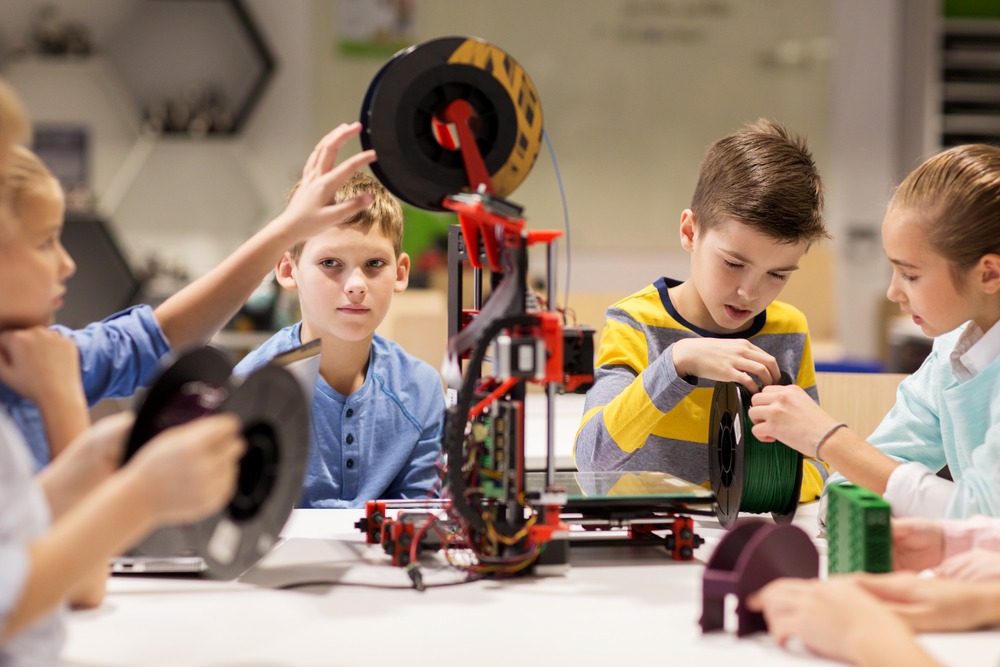As governing bodies continue to recognise and place importance on STEM subjects and the creative design process, 3D printers are becoming more prevalent in schools. Right across the spectrum of subjects, 3D printing can help students design, create and visualise their curriculum.
3D printing and associated skills are transportable and relevant across subject areas as diverse as chemistry (for helping students visualise chemical elements for example), history and geography. The skills that students learn in school are applicable to a host of industries and roles in the workforce – advanced manufacturing, engineering on-demand replacement parts in industries such as mining and energy supply, healthcare, construction and industrial design.
However, despite the recognition that print and design are of fundamental importance to future industries, there is a serious roadblock to many students acquiring both skills and a passion for 3D printing – the machines themselves.
Schools are almost always operating on a tight budget. This generally translates into cost-savings wherever possible and appropriate, which in turn often results in the acquisition of sub-prime hardware.
In many cases, this will not have a significant impact on the learning environment – however, when that hardware is manifestly unreliable or inherently slow, it will have a negative effect on a student’s learning experience and place a significant barrier between the student and the subject.
3D printing is a process that takes some patience – not an asset that the average 12-year old has in abundance. Children want to see their designs come to life as quickly as possible, but their enthusiasm is often stymied by slow and unreliable machines. Many schools elect to spend a minimal amount on hardware, often stretching budgets into other areas to promote diversity of learning tools, rather than focus on one or two areas that could be a point of strength for the school.
The major factors to consider in a 3D printer should include: ease of use, reliability, safety, cost-effectiveness AND print speed. Sadly ,this last point is often overlooked, in favour of affordability. To lower drop-out rates and keep students engaged, it is imperative to focus on reliability and speed of the hardware involved, as this will increase student engagement and lower the roadblocks that deter students from pursuing studies in printing and design.
Going back a step, the benefits of 3D printer use in schools – right from K-12 – are many and varied. Students can experience design and creative engineering, and see their projects come to life in front of them. 3D printing can also help them visualise scientific and mathematical concepts, making learning more inspiring and generally ‘fun’.
Keeping students engaged on a complex scientific project becomes exponentially more appealing if they can visualise then actually produce something tangible. Physical learning projects, such as those that can be created by a 3D printer, help keep both student and teacher in constant dialogue, resulting in a more engaging lesson. Further to this, getting students to think more creatively – from concept through to design and eventually execution of a task – is likely to inspire more students to look at STEAM subjects as fun and engaging, rather than overly technical and hard. Increasing student engagement is critical for the future of Australian industries such as advanced manufacturing, industrial design, technology and mathematics, so creating a strong, clear, engaging pathway from the early stages upwards will play a crucial role in that long-term development.
However, that level of engagement drops and STEAM subjects become discouraging if the hardware involved is not fit-for-purpose. Hobby and lower-end printers may look appealing out-of-the-box, but are simply not built for reliable, quality printing. A project that is meant to be engaging for students will soon become dull or even off-putting if the task they have worked hard on fails to materialise because a printer is offline, or a spool keeps tangling. Cheaper machines are often out of order, which means that a student will have to wait even longer for their project to be complete, which again leads to dissatisfaction and higher drop-out rates.
If schools are going to take STEAM subjects seriously, especially those around science, design, and engineering, it is important to have the right tools in place. A quality, stable printer that is capable of producing high fidelity 3D projects will provide years of reliable service, leading to engaged students who actively pursue an education in this space.
Ben Darling is Senior Territory Manager ANZ at Stratasys


Latest posts by Education Technology Solutions (see all)
- Network Technologies Driving Sustainability for Education and Hospitality in 2025 - May 6, 2025
- Keypath Education Launches AI-enabled Short Course Platform to Drive Career Progression for busy Professionals - February 19, 2025
- Lumify Work Partners with AI CERTs™ to Bring Cutting-Edge AI Certifications to ANZ & PH - February 5, 2025
You must be logged in to post a comment.


There are no comments
Add yours